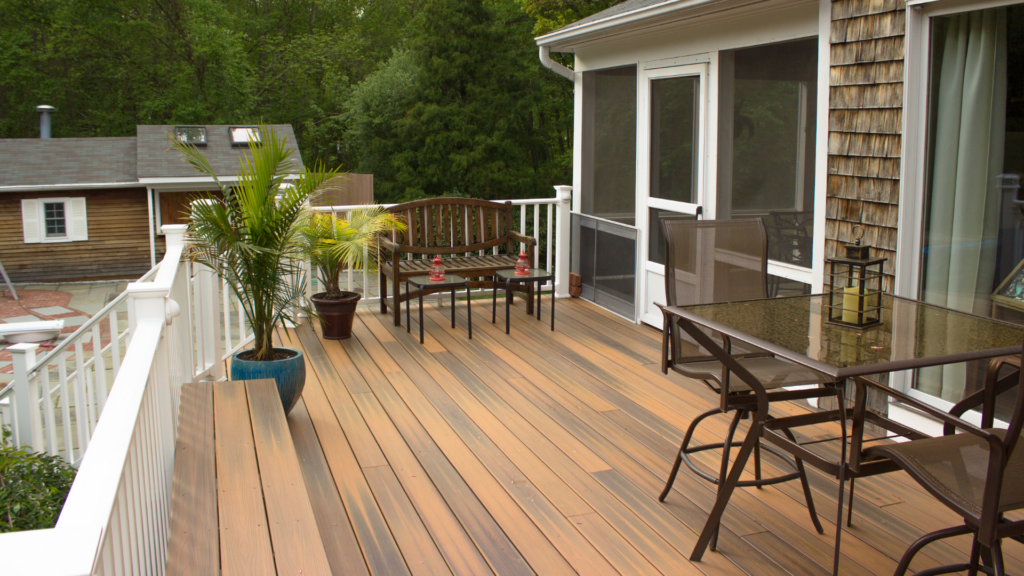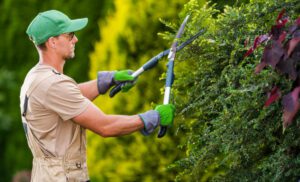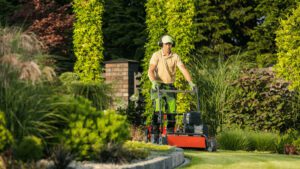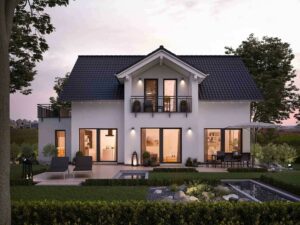If you’re planning to upgrade the outdoor space of your property, there are a couple of important things you should consider, and decks are definitely worth the investment. Whether you want to build a simple patio or a fancier terrace, it can be achieved easily once you know your specific needs and have a clear understanding of the different materials out there. In general, decking is an excellent addition to any house and can have many benefits. First, it will elevate the entire outdoor space around the property and help it look more appealing and well-maintained. This is especially important if you are a property manager working with multiple single-family homes, as making the houses commercially successful is a priority, and most decisions should be made around it. An enhanced curb appeal is a key factor in this process, as the exterior space of any house is an essential part of the entire property. And even if you have an impressive interior space with upgraded furniture, the first impression coming from the outdoor space always stays with potential buyers and is difficult to forget.
This is why investing in your outdoor space is of great importance, and decks are an impressive addition to it. However, aside from its huge role in the exterior space of the property, decking is also extremely helpful to avoid the complexity of lawn care and maintenance. Even though a healthy lawn itself is a good addition to the outdoor area, it can be extremely time-consuming to maintain and requires a lot of effort too. This is why many people choose decking as a good option to avoid dealing with regular mowing, watering, and all the other lawn care practices.
There are different materials of decking out there with all their peculiarities, and making a decision among all the available options can be overwhelming. However, narrowing down the huge list, there are three main decking options that most people choose from—softwood decking, hardwood decking, and composite decking. And before making a decision on your own, it is important to understand the difference between them, their specific advantages and disadvantages, and how each of these types works in general.
1. Softwood Decking
Softwood decking is one of the most popular exterior decking options as it offers many advantages people look for. Softwood decking is made of fast-growing evergreen trees, such as pine or spruce.
Advantages
1. Softwood decking is the most affordable decking type. Being easily replaceable, it also offers flexibility in price which many people look for. This is why, if you’re looking for a budget-friendly but also good-looking type of decking, then softwood can be the right option for you.
2. Softwood is eco-friendly. That’s right, being made out of fast-growing trees, softwood is a good option if you prioritize eco-friendliness.
3. Softwood is easy to work with. Plus, you can easily change colors.
Disadvantages
1. Softwood is not as strong and long-lasting as other options because of its low density. This, however, doesn’t mean that softwood is not durable at all. If well-maintained, it can last up to 25 years.
2. Softwood requires higher maintenance for durability compared to other decking materials out there.
Installation & Maintenance
One of the most important factors in working with softwood is that it should be pressure treated before installation. Pressure treatment will typically include anti-rot chemicals, thanks to which the life span of the softwood deck is extended, making it more likely to last longer. Aside from this, the overall installation of softwood decks is much easier as it is very simple and flexible to work with. Besides, not only does pressure treatment expand the deck’s life cycle but it also elevates the softwood’s look and makes it more appealing.
However, with the necessity of pressure treatment comes also the need for proper maintenance. Even though easy to work with and affordable decking material, well-treated softwood requires regular maintenance in order to make it last longer. In general, softwood should be deep-cleaned and oiled at least twice a year.

2. Hardwood Decking
Hardwood decking is another widely popular decking material, coming from slow-growing trees, such as oak. However, unlike softwood, hardwood is structurally complex and not as accessible, which is why it is more expensive. While there are some drawbacks you should consider when working with hardwood, it also offers a number of benefits and has many superior qualities.
Advantages
1. The most important advantage of hardwood decking is its strength and durability. Considered to be the most long-lasting decking type, hardwood can serve up to 50 years if maintained properly.
2. Superior quality is another huge advantage of hardwood decking. While other decking materials can also have good quality, hardwood guarantees the highest quality for decking.
3. Hardwood also offers various design options, depending on specific tastes and preferences.
4. Hardwood is the safer option as it is resistant to fire, rotting, and splitting.
Disadvantages
1. The biggest disadvantage coming with hardwood decking is indeed its price. Because of its rareness, hardwood is the most expensive decking type, even though it is a great investment in the long run.
2. Having a complex structure and difficult to process, hardwood requires more time and effort for installation.
3. Maintenance is essential for hardwood decking. Regular maintenance is required if you want the deck to be in a good condition and serve you longer. However, compared to softwood, hardwood is much easier to maintain.
Installation & Maitenance
In general, hardwood is a slow-growing tree and can take longer to be ready for decking. It is also structurally complicated and difficult to process, which is why its installation requires more time. However, it is important to follow all regulations and work with professionals in the field to ensure the result is successful and of high quality.
As for maintenance, it is important that your hardwood deck is maintained routinely and cleaned properly each time. However, it is not as complicated as it sounds. All you need for proper cleaning is soapy water, preferably warm, and a non-metallic bristle, and you’re good to go.
3. Composite Decking
Of all the three decking types, composite decking is the newest one and is becoming more and more popular thanks to its many advantages. Composite decking is made out of plastic and wood, a modern mixture that results in an impressive-looking deck that offers advantages that wooden decks do not.
Advantages
1. Composite decking is a long-lasting option and can serve up to 50 years, making this a superior advantage to consider.
2. Another important advantage to know about is that composite decking is much easier to maintain than other decking types.
3. Composite decking is also the most mold-resistant decking type out of the three.
4. Another advantage of composite decking is that, unlike softwood and hardwood, it is waterproof.
5. Finally, composite decking offers two different forms–board or tile, making it more modern looking and preferred by many individuals.
Disadvantages
1. Price is one of the disadvantages of composite decking, as it can be quite expensive to get. However, even though it is more expensive than softwood, composite decking is cheaper than hardwood and can serve just as long, making it a good choice.
2. One thing you should consider carefully when choosing composite decking is its color, as it will be practically impossible to change the color later.
Installation & Maintenance
When it comes to installing composite decking, it is important to follow all guidelines coming with it. Since it is partially made of plastic, it is important to consider the possibility of thermal expansion, which is why it is recommended to have professionals complete the job for better results. Experienced and skillful contractors know all the specifics of working with composite decking and can deliver fast and easy installation.
As for the maintenance of composite decking, it is generally simple and easy and requires much less effort than softwood and hardwood decks. While cleaning your composite deck is always recommended, it does not require special treatment like decks made out of wood.
All of these three decking types are different and unique in their own way, and a common question among our clients is, what is the best material for outdoor decking? To answer this question, it depends on your specific needs and preferences. Each of them has its own advantages and disadvantages that should be considered when choosing an exterior decking type. If you prioritize modern design and durability but are tight on budget, then composite decking might be the best option. However, there are also individuals who want an affordable solution but strongly prefer wooden decks, so softwood is the recommended choice in this case. This is why it is important to have a clear understanding of your needs and budget and consult with a qualified and highly-experienced partner company that can consider all your custom requests and deliver the most efficient and excellent solutions possible. At the end of the day, whichever of these 3 types of decking you choose, the most important thing is that you are confident in your crew, and you can rest easy and watch it all come together.



